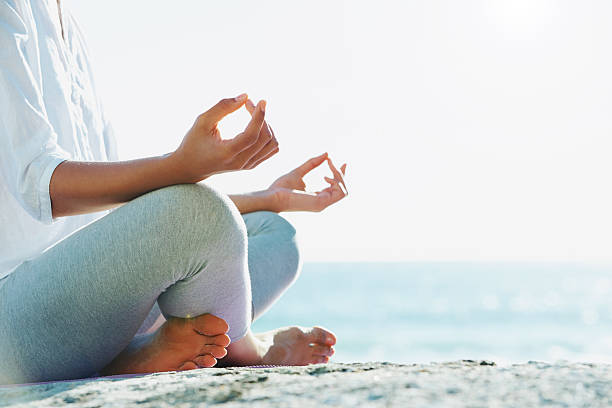Benefits of Yoga for Runners

Who said yoga and running are polar opposites? Nowadays, fitness enthusiasts are discovering the incredible compatibility between these two activities. It’s no longer unusual for top fitness coaches to incorporate asanas in customized strength training programs for runners or to see events sprouting up across the country that combine a 5K run with yoga and meditation. Yoga practitioners have embraced running to boost their cardio workouts, while runners swear that a regular yoga practice is the ultimate tool to prevent injuries, sharpen their focus, and amp up their overall strength and stamina- all key ingredients for achieving top-notch running speeds.
7 Ways Yoga Makes You a Better Runner
1. It activates all the joints and muscle groups
Running is a repetitive activity that uses the same group of muscles and joints for a prolonged period of time. This creates an imbalanced muscular system that is vulnerable to injury or chronic pain. The strength and flexibility you develop when you add yoga to your repertoire promotes whole-body balance and increases the overall stability of your core strength. A well-conditioned core helps muscle groups work in sync with one another and prevents extraneous movement of the torso, helping you run more efficiently and stay injury-free. Many yoga poses help stretch and strengthen the hamstrings, hips, hip flexors, thighs, quads, and calves—all areas that can get exhausted by running.
2. It increases focus and confidence
Yoga isn’t just a physical practice—there is also mental and emotional work that happens on the mat, which can boost your levels of focus, concentration, and determination. A typical class includes an asana sequence, mindful deep breathing, meditation, and active body awareness. These techniques quiet the mind and remove emotional and mental clutter and are key for runners who need to concentrate on performance rather than on the day’s stressors. With practice, runner yogis can learn how to efficiently transform negative thoughts and ignore distractions that pop up during competitive running.
3. Yogic breathing improves lung capacity
Pranayama is an excellent way to improve your breath control and boost lung capacity, both of which are crucial for runners. The use of pranayama techniques, can help you conserve energy while running and recover more effectively after a workout. Improving your lung capacity will allow you to maintain an even breathing pattern through all types of running, from tempo runs to distance runs. Many modern runners have also discovered that practicing calming breathing exercises like Nadi Sodhana before a competitive run reduces the anxiety of pre-race jitters.
4. It increases flexibility
Another benefit of combining yoga and running is that it improves the overall flexibility of muscle tissues and increases the range of motion of your joints. One of the main advantages of flexible muscles and limber joints is that they result in greater stride length, therefore increasing speed. Flexibility and greater range of motion also help decrease the risk of injury of pulling a muscle or spraining an ankle while in training or during a race. Runners with tight legs can use a yoga block and strap to promote good alignment while stretching.
5. It promotes relaxation
Because yoga isn’t a competitive sport, it provides runners with the mental and emotional balance necessary to destress before or after a competition. Yoga postures, breathing techniques, and meditation can help you calm your mind and reduce stress and anxiety. This can be especially helpful if you are prone to pre-race nerves or have trouble sleeping before a big event. Every runner knows they won’t be on top of their game if they spend the night before a competition tossing and turning!
6. It develops body awareness
The development of bodily awareness that results from adhering to a yoga regime helps runners more readily identify the signals of pain or discomfort that the body sends. Paying attention to these signals by focusing on physical sensations allows runners to avoid injuries and know when it’s time to cut back or when they’re ready to add a bit more time to each session. This cultivation of body wisdom and physical awareness also brings a greater general understanding of the body and how it works, which could further boost performance.
7. It eases tension and pain
Runners who have become injured during training or a race are increasingly seeking relief by practicing yoga during the healing process. Gentle and restorative yoga poses support the healing process by activating the body’s lymphatic systemand by improving local circulation. The slow gentle movements of asanas also help strengthen tissues as they heal, and it’s possible that even chronic injuries may eventually self-correct through a mindful yoga practice.
Conclusion
By practicing asanas, you’ll be able to stretch and strengthen muscles throughout your entire body that may not get much use during running, reducing your risk of injury and ultimately improving your overall running performance. Additionally, the mental boost provided by yoga – including increased focus, concentration, and mindfulness – can keep you present and centered during long runs or races. All in all, the benefits of yoga are clear – so why not give it a try?